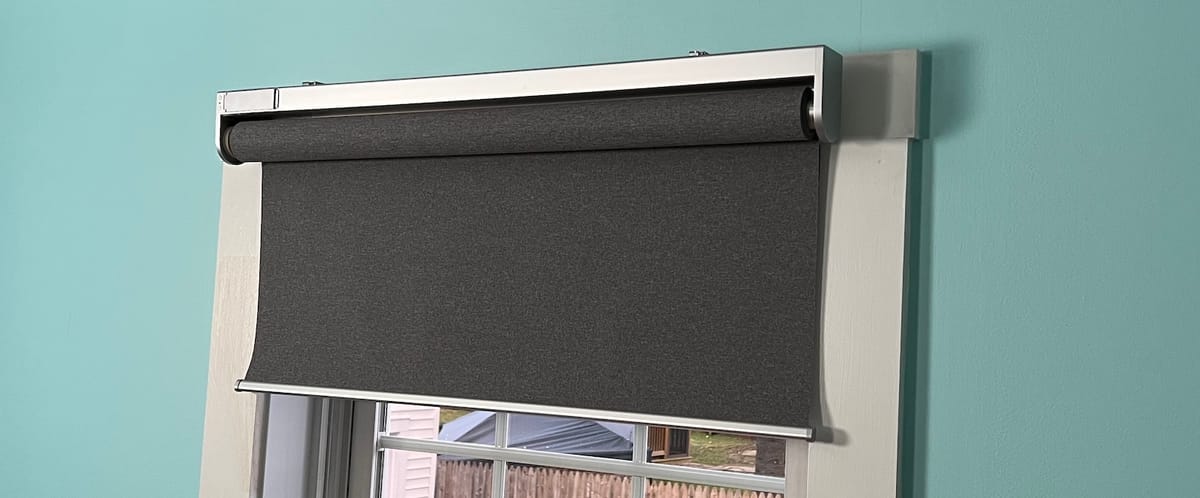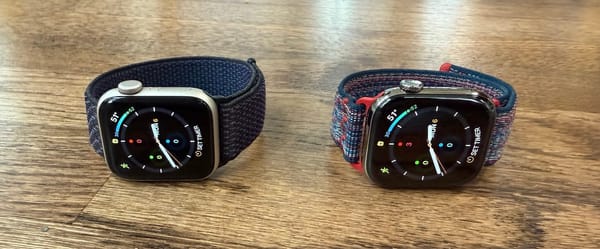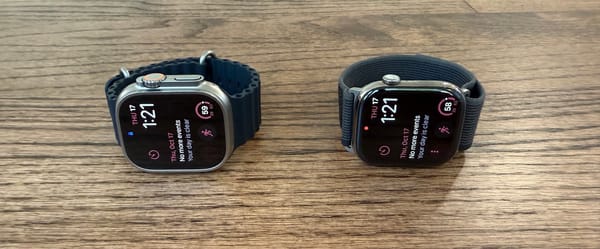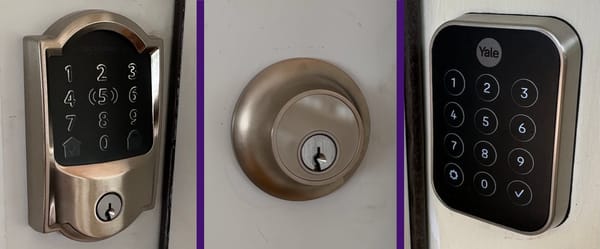IKEA FYRTUR Smart Shade Review: A HomeKit Must-Have

I was skeptical before buying my IKEA Smart Shades because IKEA is known for furniture rather than tech devices. Usually, things get messy when non-software companies try to make software.
And the $160 price? It seemed too good to be true. HomeKit smart blinds and shades are usually more than double the price of IKEA’s.
Surprisingly, these shades have been my favorite tech purchase of the year. IKEA’s shades are a great, affordable way to add blinds to your smart home.
Let’s go into detail about the installation, design, software, and competition. Then, I’ll wrap things up by telling you about a strange issue that I ran into.
Installation
IKEA’s smart shades were easy to mount. Just screw in the two brackets, then clip the shade to the brackets.
Keep in mind, the screws were not included. It’s not a huge deal, but it would’ve been nice if screws for at least one type of mounting surface (probably wood as it’s the most common) were included.
Once the shades are mounted, just slide the battery into the compartment and plug the signal repeater into an outlet near the shade. The shade, remote, and signal repeater come paired to each other, so there’s nothing left to do once mounted and plugged in.
IKEA rates the battery for 4 to 6 months of use before needing a charge via the micro USB port. You can view the battery levels inside the IKEA app or the Apple Home app. I got exactly three months out of mine, but I used my battery out of the box without charging it first, so IKEA’s estimate is probably correct (with the assumption of one roll up and down per day.)
The shade can be controlled with the two buttons on the left side of the shade. The top button moves it up, while the bottom button moves it down.
Assuming you want smart home compatibility or to control the shades with your phone, you’ll need to buy the IKEA TRADFRI gateway, which plugs into your WiFi router. While the setup and installation of the shade is easy, the setup of the bridge may cause headaches because the pairing is a bit painful.
First, you need to pair the gateway to the app, then pair the remote to the gateway. Then, pair the signal repeater to the gateway. Finally, pair the blinds to the gateway.
Four separate pairings leave lots of room for error. Once all the accessories are synced, they can be seen in the IKEA app, then you can add your shade to HomeKit by scanning the QR code on the back of the gateway. With HomeKit set up, the shades can be controlled with Siri and inside the Apple Home app.
The syncing process took me about 30 minutes. I’d like to see IKEA improve the setup process, but it’s not a huge deal, assuming you get things set up properly because you only have to do it once.
The length of the blind is 76 ¾”. However, the maximum drop level can be customized by double-pressing the down button on the shade once it’s in the proper position.
A custom drop level was awesome when I had a window air conditioner installed because I didn’t want the shade to cover the AC.
Design
Overall, the quality of these exceeded my expectations. The materials feel and look well built considering the price.
I expected the motor to be louder than it is, but it’s relatively quiet. The motor isn’t the most powerful and I’m not sure of its longevity, but it’s good enough to get the job done.
In Europe, IKEA sells a blackout model (IKEA FYRTUR) and a light filtering model (IKEA KADRILJ). In the US, your only option is the blackout version. And it only comes in one style: dark gray. The shade part is made of grey polyester material, while the shade enclosure is silver and made of aluminum.
These are blackout shades, which can be good or bad news depending on what you’re trying to accomplish. I had them in my bedroom, where the blackout style was appreciated. The blackout name isn’t just for show, they really do block out most of the light. Let me demo what this room looks like during the day, without any lights on.
IKEA offers eight different width sizes: 23″, 27″, 30″, 32″, 34″, 36″, 38″ and 48″ and they all roll down 76 ¾” vertically. These sizes should work for most windows because the fitting doesn’t need to be perfect with the shades placed on the trim or outside of the window. But if you have an unusual window situation, you’re out of luck.
In the future, additional colors, light-filtering options, and more sizes. But for the price, it’s tough to complain about the lack of style options or sizes. I’d rather have one affordable smart shade, than higher-priced shades that come in lots of colors.
Software
To get full value out of these shades, they should be paired with the IKEA bridge and be used in a smart home. Because the bridge is just an additional $35, it’s a no-brainer purchase. Otherwise, the shade can only be controlled with the physical remote. You can skip this software section if you don’t plan on buying the bridge.
So what makes the bridge so powerful?
For starters, you can view the status of and control your shade inside the IKEA app. You don’t even have to be at your house to control it.
A daily schedule for when the blinds should go up or down can be created too.
With the bridge, IKEA’s shades will work with Alexa, Google, and Siri smart homes.
Once they’re integrated into your smart home, you can create automations where multiple smart devices in your house will do something after a certain condition is met or command is said. For example, create an automation where all your smart lights turn off and the shade closes whenever you leave your house.
You can do a few automations inside the IKEA app, but I recommend using the Apple Home app if you’re an iPhone user because it’s a smoother and more advanced experience
Overall, the IKEA app isn’t great. It can be a bit slow, user-unfriendly, and some users have reported that the automations don’t always run consistently. The good news for iPhone users is that once the shades and bridge are synced, you can ditch the IKEA app and just use the Apple Home app.
Here are three examples of how I use the IKEA shades inside my home:
I often ask Siri to “set the blinds to 35%.” Pick any percentage and do this with any smart assistant. It’s a good way to block the sun without blocking all of the light from coming into the room.
For a couple of months, my smart shades acted as a subtle alarm clock. I created an automation for the blind to open, each day at 7:00 AM. As my bedroom went from dark to light and the quiet noise of the blind moving up was enough to wake me up. (FYI: I don’t have a real job or have to worry about being late for anything, but this worked great for me.)
Recently, I moved shades into my office. When I’m ready to shoot a video, I say “Hey Siri, set video.” In this automation, the overhead light turns off, the two studio lights turn on, the Nanoleaf Shapes turn on, and the shades close, which removes all the natural light.
Competition
The IKEA Smart Blinds are around $150 (depending on the size). If you want it to work with your phone and/or smart assistants, you’ll need the $35 bridge too.
If you go on Amazon, there are a few smart blinds and shades in the same price range as IKEA. I haven’t tried them, but they have solid ratings and are probably a solid option for Android users.
Unfortunately, there aren’t any affordable shades with HomeKit support. Compared to the other HomeKit smart blinds on the market, IKEA’s blinds are an incredible value and what makes these special.
Let’s get into the two other HomeKit options.
Serena Shades by Lutron are the most popular option. You can choose from roller shades, wood blinds, or a honeycomb design. Just give them precise measurements of your window and you’ll get a custom fit blind in return. These are around $600 after you’re done customizing.
Serena Shades are probably of superior quality and look better compared to the IKEA shades, but the IKEA blinds don’t look terrible (assuming the blackout gray style works in your room).
SOMA Smart Shades 2 are another HomeKit option. Instead of making the entire blind, they make an accessory that retrofits your current blinds by controlling your blind’s cord, loop, or beads.
I’m not a huge fan of retrofit tech because of the potential headaches with compatibility issues, but if you’ve got a pair of blinds that you love, SOMA is an option to make them smart. Keep in mind, you’ll need the motor and the WiFi bridge, which will cost a combined $200.
My Strange Issue
After the rough experience with the initial sync, I didn’t run into any issues for months.
But I ran into an issue when I had to re-adjust the drop level after removing my window AC.
I let the shade roll all the way down for the first time while I was adjusting. Then, I let it roll up to where my stopping point was and stopped it. I double pressed the down button to set my new drop position and everything seemed perfect.
But later in the day, when I rolled up the shade, the shade became tangled. I fixed things by unrolling it a bit, then I manually realigned the shade onto the roller. It’s been a month since this happened and everything has worked perfectly since.
I searched the internet and couldn’t find anyone else who had this issue. Most likely, I’m just an idiot and shouldn’t have unrolled down as far as I did when I was realigning. Either way, this shouldn’t be concerning, but I wanted to include my issue for transparency.
Who is this for?
Get the IKEA smart roller blinds if you want shades that will automatically close based on a schedule or you want to integrate them with your other smart home devices. These shades combined with HomeKit are amazing for those heavily into Apple’s smart home ecosystem because the automations are limitless.
Unfortunately, the initial pairing of the bridge and the app aren’t ideal. But pairing is just a one-time event and if you have an iPhone, you can use the Apple Home app and ditch the IKEA app altogether.
As far as the aesthetics? This is a personal preference. It’s not the nicest looking or the best quality, but it’s better than I expected and a great value for $150. As long as the gray color fits with your room’s colors and you don’t mind blackout, you’ll like the IKEA shades.




